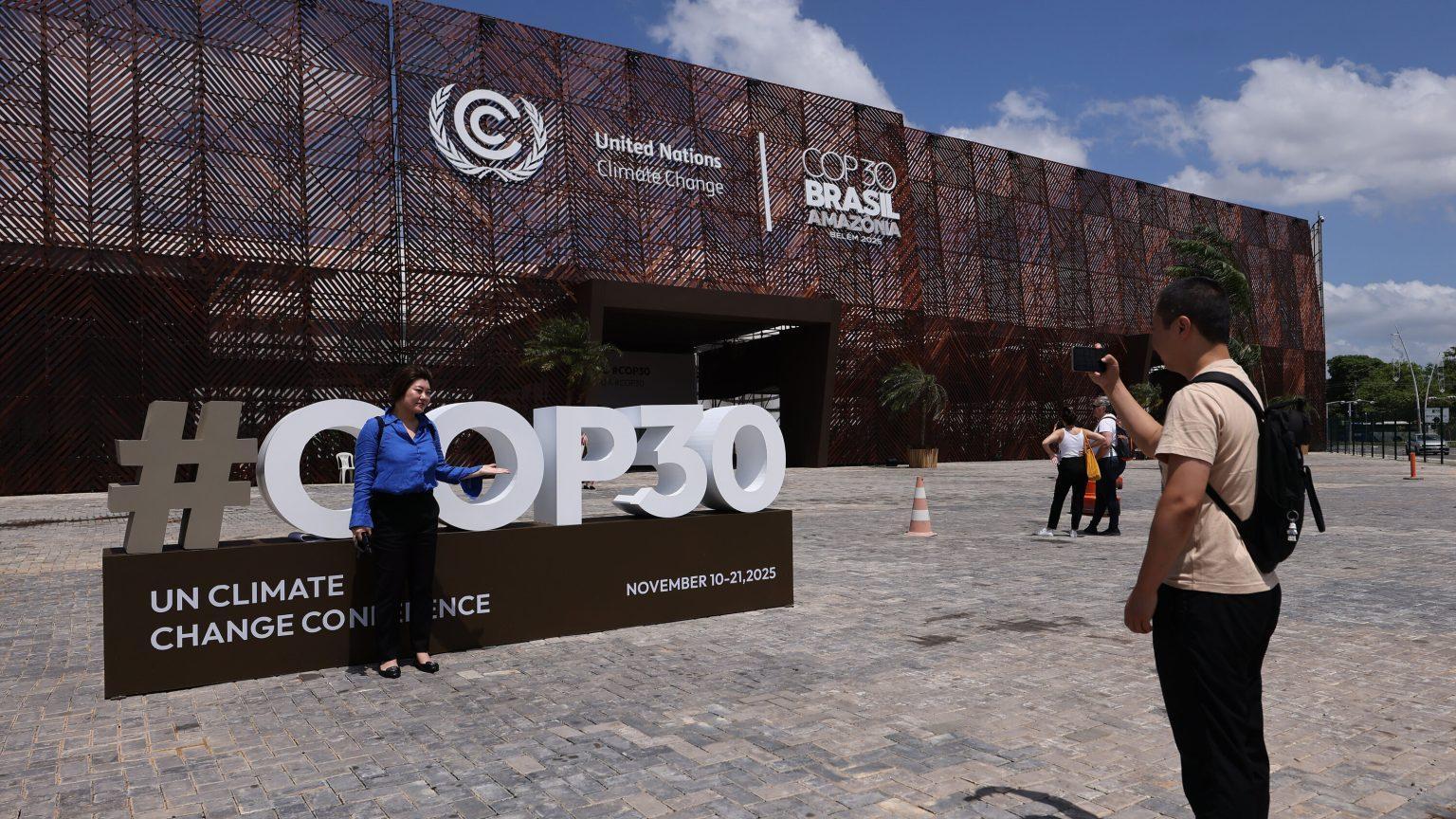Africa-Press – Botswana. Climate adaptation continues to be overlooked in the multilateral sphere, in favour of mitigation-focused agendas driven by funders seeking more tangible investment returns. Still, the injustice inherent in the climate crisis is such that the most affected by the impacts of climate change are low-income countries and the impoverished masses, who often lack the means to properly adapt and find themselves at the forefront of a crisis they bear no responsibility for.
In this context, Africa should not only secure its rightful share of adaptation finance but also effectively channel it to tackle socio-economic priorities – at the core of which lie questions of infrastructure development and industrialisation. Thus, the call for equitable financing and sound implementation of adaptation measures in Africa should not be distinct from the wider vision of social and industrial development. It can only be meaningful if it aligns with Africa’s own goals of poverty eradication and inequality reduction, and is pursued on the continent’s own terms.
Climate adaptation: poorly approached and constantly deprioritised on the global stage
Framing adaptation finance in the context of historical responsibility has never been an easy task in climate negotiations. The escalating costs of climate change demand far more public finance, yet global North countries are providing vastly insufficient contributions. Within a multilateral space seen by many as increasingly bureaucratized, this is fueling an ever-more complex landscape of adaptation processes under the UNFCCC – often at the expense of progress on substance.
If there is one consistent pattern that stands out over the years, it is the systematic deprioritization of climate adaptation and related funding. And now Loss and Damage finance is likely to follow the same ineffective path. This is happening even as climate impacts continue to disrupt livelihoods, escalate displacement, etc. Of the US$1.9 trillion in climate finance tracked in 2023, only US$65 billion (3%) was committed specifically to adaptation, highlighting the stark misalignment between actual needs and current financial flows. The majority of this finance remains debt-based, worldwide and within Africa, channelled through loans, with a diminishing share of concessional finance, thereby increasing the indebtedness of developing countries.
Beyond the issues of quantity and quality of finance, other fundamental questions touch on where the money goes: is there a real willingness to make adaptation finance more accessible to historically underserved areas, or are regional imbalances unavoidable in a system solely reliant on the dictates of risk rating agencies? In its latest assessment, the IPCC argues that the issue is not a shortage of capital, but rather a systemic failure to direct the vast available liquidity to areas of greatest climate vulnerability. Also, if most funding goes to crisis response — by financing temporary shelters after a flood strikes a region, and then by distributing aid or cash a year later when another climate-induced disaster hits the same region — are we not breeding dependency instead of investing in long-term resilience-building?
… And nationally? The need for enforceable measures and a critical look at techno-solutionist approaches and mitigation-centred agendas
At the national level, things are not always much brighter. Even when we speak of climate adaptation as an African priority, many of our countries still lack the regulations needed to enforce adaptation measures, such as promoting strategies that enhance adaptive capacity and reduce vulnerability, while prohibiting practices that disregard the urgency of adaptation. For example, there has been a significant national debate in recent years in Morocco over the export of water-intensive crops (e.g avocados and watermelons) from arid and semi-arid regions, given the associated risks of groundwater depletion amid persistent structural drought.
Another concern is the growing tendency to adopt a purely techno-solutionist approach when addressing water scarcity, turning to desalination, for instance. More generally, in the global climate response, we often hear of so-called high-tech solutions such as carbon capture or atmospheric water generation (air-to-water), sometimes of questionable technical and economic viability, being presented as silver bullets, much to the delight of the private companies providing these technologies.
We should realise that the solutions are not only, or necessarily, technological. We cannot go against nature and then expect technofixes to repair the socio-environmental damage caused. The same is true for many mechanisms rooted in market logic. As Einstein put it, “Problems cannot be solved with the same mindset that created them.” Instead, solutions can come from redefining our relationship with water, in this case by wisely recognising the aridity of our land and building water governance models and food policies accordingly. This involves revaluing our traditional, unprocessed, and local food habits; several local ‘superfoods’ can prove far more accessible than quinoa and need not be grown thousands of kilometres away. It also involves leveraging traditional knowledge systems of smallholder farmers, who are often frugal with water and other inputs. This is vital for any agroecological shift and for any path towards equitable climate adaptation, true food sovereignty, and social justice in Africa.
Also, while the much-needed balance between mitigation and adaptation is acknowledged by our countries as a core aspect of “just transitions,” we still see far more policy planning directed towards decarbonisation than towards building resilience, even in countries facing urgent adaptation needs. Yet adaptation projects are inherently linked to people’s livelihoods, whereas large-scale decarbonisation investments can sometimes create only a few hundred jobs and offer limited socio-economic benefits. The reality is that adaptation projects often have longer payback periods, which contrasts with the profit-maximising and short-termist capitalist models on which our global economy is built.
Towards African-led approaches to a climate adaptation-infrastructure-industrialisation nexus
On one hand, widespread poverty in resource-rich countries is an aberration that the current African generation is no longer willing to accept. Several countries today (Guinea and Burkina Faso, for example) are pursuing bold drives to industrialise decades after their independence. Serious industrial development policies that prioritise local processing and address infrastructural deficiencies to move away from dysfunctional ‘pit-to-port’ models and related economic dependency mechanisms are indeed essential and long overdue.
On the other hand, adaptation to climate impacts is increasingly becoming an African priority. Hence, the need to align adaptation with poverty eradication, job creation, and broader socio-economic objectives through an adaptation-infrastructure-industrialisation nexus. This approach should encompass both climate adaptation projects involving infrastructure development or local value addition, and industrial or infrastructure projects that deliver climate adaptation or disaster risk reduction co-benefits. Examples include water storage systems, climate-resilient pavements, closed-loop water systems in manufacturing, dry or hybrid cooling systems for factories in water-stressed regions, and nature-based solutions (NbS) integrated with traditional built infrastructure to enhance resilience and cost-effectiveness, such as mangroves planted alongside sea walls to improve coastal protection.
This nexus can serve Africa if explored in a sovereign manner. At present, around 90% of tracked adaptation finance to the continent comes from international public institutions, with more than half provided as loans. Africa needs to take ownership of its adaptation priorities, from project planning and implementation to data governance, through the creation of more national climate funds and by having local expertise lead relevant projects. Also critical are sub-regional, regional, and pan-African synergies for the deployment of joint funds and programmes, as well as South-South collaborations that leverage African institutions and regional banks, particularly at a time when international climate finance is becoming increasingly unreliable. The implementation of AfCFTA should also act as a catalyst for resilient infrastructure development across the continent, promoting regional value chains while implementing national and sub-national adaptation plans and supporting adaptation mechanisms or projects within Special Economic Zones (SEZs) or industrial ecosystems in Africa.
In this nexus, the local private sector has an important role to play. Local champions must be promoted, and space must be created for African-led impact investing. When it comes to foreign private sector actors operating in Africa, this conversation should go hand in hand with that of social and environmental safeguards, particularly in sensitive adaptation sectors such as water, healthcare, and access to basic human necessities. Corporate social responsibility should ultimately contribute to genuine social transformation and not serve as mere tokenism tied to extra-financial reporting obligations or PR strategies.
This nexus should also be reflected in current negotiations as we approach COP30, with work on indicators within the Global Goal on Adaptation (GGA) nearing completion. Africa would benefit from ensuring that its socio-economic priorities are properly reflected in such global adaptation processes.
Of course, how serious the world is about reforming a broken global financial architecture is central to this discussion. Achieving equitable climate adaptation requires addressing the root causes of vulnerability and inequity and redressing underlying structural conditions, which takes us back to the legacy of colonialism and the Bretton Woods institutions. Escaping the debt trap faced by African and other Southern countries will not be achieved through band-aid tools or instruments that offer so-called temporary debt relief, but through a complete rethinking of the very foundations of our current financial system to free it from predatory lending practices and neoliberal schemes that benefit the same elites responsible for the breakdown of the climate system. In this sense, the Marxist class-based thought remains fundamental in approaching the climate problem and related dynamics at both global and local levels.
panafricanreview
For More News And Analysis About Botswana Follow Africa-Press






